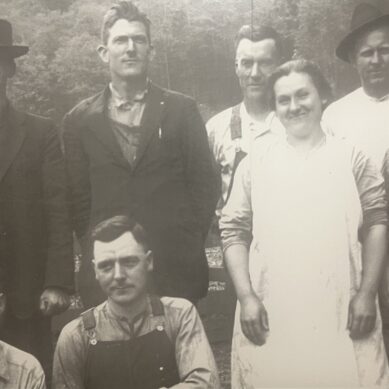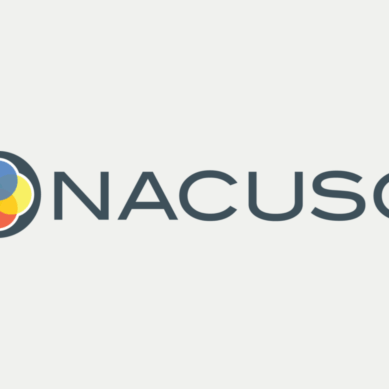Don’t Drop the Ball: How To Handle the Great Wealth Transfer While Matching Core Credit Union Values
Over the next 20 years, around $84 trillion in assets will be passed on to heirs—this has been denominated the Great Wealth Transfer. $12 trillion of this will go to charity, while the remaining $72 trillion will be handed primarily to Generation X, Millennials, and Gen Z. Needless to say, financial institutions must brace themselves for this ride.
This is especially true when inheritance is stored at a credit union. Instead of being a painless process for those grieving, inheritors are faced with mountains of paperwork and legal conditions at these institutions when they could be spending quality time to heal.
As such, it’s easy to understand why inheritors wouldn’t want to do business with an institution that still operates in the past. Other businesses have charged ahead and spent time and resources on making this process easier for them—Charles Schwab’s latest inheritance center is a major example.
Credit unions looking to welcome and retain younger members with their newly received inheritance must follow suit and prioritize providing outstanding services. Unfortunately, attracting younger customers has proven difficult as current practices lack variety, digitalization, and streamlined inheritance solutions.
As a result, credit unions might be on the losing end of this phenomenon. But it doesn’t have to be this way. They can take on this opportunity for growth by putting customers at the forefront, adopting technological advancements that enhance their credit union values to provide a seamless experience for heirs.
The current pitfalls of the inheritance process
Digital transformation hasn’t quite made its way into inheritance transfers in credit unions — very few investments have gone into refining this process. However, as members age and younger generations prefer the bigger, more digitized banks, it’s clear that changes must be made to attract new, younger members.
This matter becomes even more pressing when you realize credit unions heavily rely on older members. From our own internal studies of these institutions, Ribbon found that credit unions tend to have one-fourth to half of their assets under management (AUM) with members who are 65 years or older. This means that their financial stability is a ticking bomb that could explode the minute inheritance transfers skyrocket and their members don’t get younger.
As it stands, the inheritance process involves filling out lots of paperwork in a bifurcated offline system, either through branches or mail. In between reviewing the authenticity of documents, running legal procedures according to each state, and much more manual work, the current inheritance transfer process ranges from six to 12 months to complete before including waiting periods — technology could reduce the entire process to two weeks.
Unfortunately, many inheritors looking to undergo their transfer successfully, don’t have much of a choice other than to make time to visit branches. Considering most inheritors are working parents, this leaves a stain on credit unions’ customer service. This means the first thing they will probably do is take that money somewhere that offers digital solutions.
Ideally, credit unions should modernize to cater to all audiences, from more traditional in-person interactions to quality digital services to retain their lineage of inheritors.
Using technology to hone in better services
Technology can save credit unions by relieving most of the time spent filling out and verifying paperwork in the current inheritance process. For example, inheritance transfers become huge detractors for staff productivity as they spend countless hours manually collecting and reviewing information and contacting inheritors.
To solve this, they can leverage technology to accept digital paperwork through an online platform that can help them review it quicker, more precisely, and transparently—minimizing human error and extra effort. Such platforms can also host direct and secure communication with inheritors, sending them notifications when issues arise or the process advances.
This quick and accurate document review is powered by emerging technologies like Natural Language Processing (NLP) and AI. These proven tools examine even the smallest of details in scanned documents and digital forms and flag any issues with reduced margin errors. This plays to credit unions’ advantage, as it frees up staff to focus on more analytical tasks and allows them to spend more time offering the outstanding customer service these organizations are known for.
While credit unions might worry about implementation disruptions among staff, what’s true is these programs are built with user-friendly interfaces as a priority—uncluttered visuals, clear instructions, and only the necessary features—allowing them to intuitively adopt them.
For inheritors, this shift creates a new digital avenue, which translates into less time driving to branches and meeting with staff to hand in papers. Plus, technology gives heirs the added advantage of sparing legal counsel. By being guided through straightforward steps to fill out forms and submit documents, they no longer need to pay extra fees associated with inheritance lawyers. They will begin to see value in this streamlined process.
Growth opportunities from modernizing practices
Credit unions are facing a massive opportunity in the Great Wealth Transfer. By infusing technology into their operations and offering digital services, they can begin blending their values with modernized processes to attract young customers and retain them beyond the inheritance transfer.
An heir’s first encounter with a credit union is likely to happen while they’re at their most vulnerable after losing a close relative. This is when organizations can shine with gestures that show they care through tech. It’s a matter of getting them on board with consideration and respect, especially as they brave a difficult time in their lives.
For example, credit unions can allocate special recommendations for inheritors to open an account and motivate them to stay through integrations with rewards services. This is also why emerging inheritance platforms offer quick options to add a thoughtful and personable touch, like sending condolences through flowers, chocolates, and other gifts.
As the greatest transfer of money in history intensifies during the coming years, credit unions must examine their operations and decide how they wish to handle and capture the influx of newcomers. Technology presents them with a significant chance to improve this transfer process, dive into a much-needed digital transformation, offer outstanding services, and potentially welcome many new younger members. The best part is they don’t need to leave their values and great personal touch aside—technology can help deliver the same warm and caring feel with the correct tools.






















































